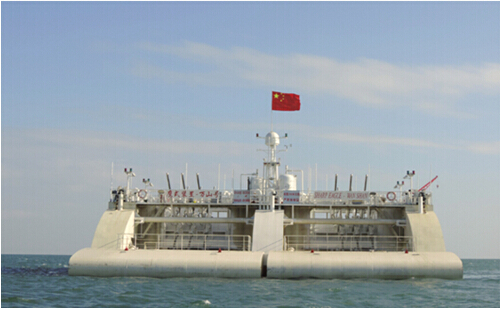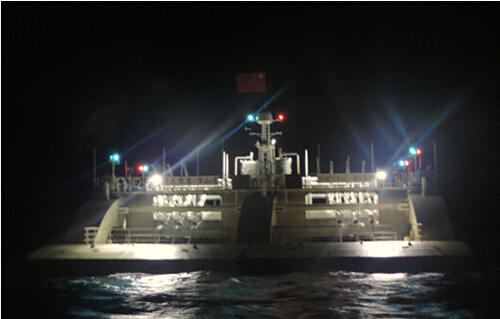
WEC Sharp Eagle“Wanshan” w

WEC Sharp Eagle“Wanshan”is generating electricity at night
November 2015,Guangzhou Institute of Energy Conversion (GIEC), Chinese Academy of Sciences has taken a significant step to develop wave energy converter (WEC) Sharp Eagle by successfully launching “Wanshan” offshore Wanshan island at Zhuhai. So far, the floating state of device is normal, the movement of absorbing floating body is stable, and the response to ocean wave is sensitive. Energy conversion system has started to work. The device generates electricity and stores energy frequently under wave conditions with wave height less than 0.5m. The first stage of sea trial of WEC Sharp Eagle “Wanshan” has formally started.
WEC Sharp Eagle “Wanshan” was built with funding support from 2013 national marine renewable energy special funds. This device is 36 meters long, 24 meters wide and 16 meters high. It’s the combination of semi-submersible barge and wave energy conversion device. It can either anchor and be towed like a ship, or it can dive to setting depth to become wave energy power generation equipment. Early in the project, the wave power capacity installed of “Wanshan” is 120 kW, which will be expanded in the follow-up work. It’s planned to install solar panels, wind turbines and desalination unit on the top platform of device. Finally, a floating multi-energy complementary platform for power generation and desalinization will be built. After 10 kW WEC Sharp Eagle “Sharp Eagle I” has run successfully, “Wanshan” is another important progress in the research and development of large-scale WEC achieved by GIEC.
WEC Sharp Eagle “Wanshan” is equipped with batteries, inverters, data collection and monitoring equipment, and satellite transmission equipment. It not only can supply electricity to island by submarine cables, but also can supply standard electricity to various instruments and equipment carried on the device. Meanwhile, bi-directional data transmission between offshore equipment and onshore control center can be realized via satellite antenna. Now, “Wanshan” has met requirement for carrying out marine environment measurements via instruments installed on the device top platform, and carrying communication equipment which is used as an offshore mobile base station.